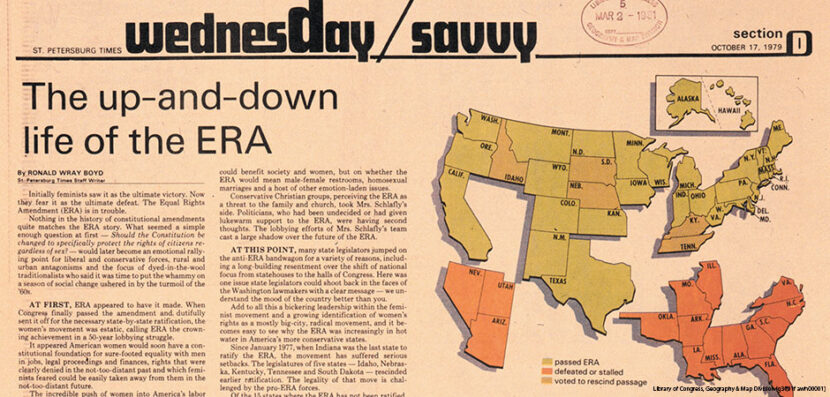
ERA . . . yes?
Women and men have equal rights under the Constitution, right?
Wrong.
In fact, the proposed constitutional amendment which would guarantee equal rights to women–the aptly-named Equal Rights Amendment–has been stalled in Congress for nearly a century. But recent developments may have given new life to the ERA. Here, Election Central takes a closer look at the amendment, why it has been stalled for so long, and what it might mean for women in the future.
What is the ERA?
In 1921, Alice Paul and Crystal Eastman wrote a draft of the ERA, with the goal of guaranteeing equal rights to women in terms of divorce, property, employment, and more. The proposed amendment was introduced to Congress but did not gain real traction until the rise of the women’s movement in the 1960s. It was reintroduced to Congress in 1971 and had passed both the House and the Senate by the following year. However, the ERA still needed to be ratified by at least 38 states (three-fourths of the union) in order to become a constitutional amendment. But by the deadline of March 22, 1979, only 35 state legislatures had signed on. Though President Carter and Congress extended the deadline to 1982, no additional states pledged support, and the amendment died again.
Why NO to ERA?
In the 1970s, opposition to the ERA was led by conservative activist Phyllis Schlafly, who argued that ratifying the amendment would upset traditional gender roles and lead to things like gender-neutral restrooms, women being drafted into the military, and same-sex marriage. Today, some conservative groups still oppose the amendment on these grounds. The main arguments used against it today are that it could lead to expanded abortion rights and that it could cause women to be drafted into military service.
A New Life
Last year, however–on the 45th anniversary of the ERA being submitted to the state legislatures–the state of Nevada agreed to ratify the amendment. Illinois followed suit earlier this year, bringing the total number of supporting states to 37. Now, activists in Virginia are trying to convince their state to become the 38th and final state to ratify. Recently, a group of pro-ERA lawmakers even spent ten days traveling around the state in a bus, trying to drum up support.

Click on this image to launch a video explaining the history of gender and wage inequality in the United States. Credit: McGraw-Hill Education
Supporters argue that if it passes, the ERA will be a powerful legal tool for ending sex discrimination, defending women’s rights, and protecting women from abuse. It will also help to undo some current laws that treat women unfairly. Moreover, it will help to end the gender pay gap: today, white women make less than 80 cents for every dollar that white men earn, and the gap is even greater for women of color.


